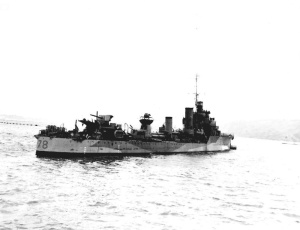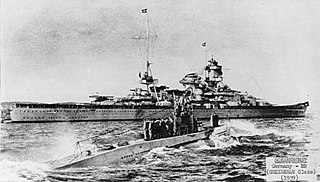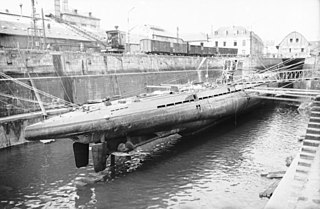| History | |
|---|---|
| Name: | UA (ex Batiray) |
| Ordered: | 1936 |
| Builder: | Germaniawerft, Kiel |
| Laid down: | 1937 |
| Launched: | 28 August 1938 |
| Commissioned: | 1939 |
| Fate: | Scuttled, 3 May 1945 |
| Status: | Sunk |
| General characteristics | |
| Displacement: | |
| Length: | 86.65 m (284 ft 3 in) |
| Beam: | 6.80 m (22 ft 4 in) |
| Draught: | 4.12 m (13 ft 6 in) |
| Propulsion: |
|
| Range: |
|
| Test depth: | 100 m (330 ft) |
| Complement: | 4 officers, 41 men |
| Armament: |
|
U-A was the official call-sign of one of fourteen U-boats that made up the Foreign U-boats of Nazi Germany's Kriegsmarine during World War II. Built at Kiel as one of four submarines of the Ay class for Turkey, the Batiray as she was to have been named, was not handed over to the Turkish Navy but seized by Germany and commissioned into the Kriegsmarine in 1939. Two sister-ships the Saldiray and Atilay had been delivered in June 1939. One boat, Yildiray , was built slowly in a Turkish shipyard. [1] The design was a modification of the Type IX to fit Turkish requirements. Two of Turkish U-boats served in the Turkish Navy until 1957, but Atilay was lost in a training exercise off Canakkale.
Foreign U-Boats was the title for a special section created by Nazi Germany's Kriegsmarine that adopted 13 captured enemy submarines and a single Turkish vessel into the U-Boat corps. Beginning in 1939 and lasting until the end of World War II in 1945, the Kriegsmarine modified a total of 13 captured enemy submarines, then deployed them into combat with German crews. The special corps was not especially successful, as only nine enemy ships were destroyed by Foreign U-Boats through the entire war. Seven of these were destroyed by UA, which was a modified Type IX U-Boat originally built for the Turkish Navy. However, some were effective as minelayers.

Nazi Germany is the common English name for Germany between 1933 and 1945, when Adolf Hitler and his Nazi Party (NSDAP) controlled the country through a dictatorship. Under Hitler's rule, Germany was transformed into a totalitarian state that controlled nearly all aspects of life via the Gleichschaltung legal process. The official name of the state was Deutsches Reich until 1943 and Großdeutsches Reich from 1943 to 1945. Nazi Germany is also known as the Third Reich, meaning "Third Realm" or "Third Empire", the first two being the Holy Roman Empire (800–1806) and the German Empire (1871–1918). The Nazi regime ended after the Allies defeated Germany in May 1945, ending World War II in Europe.

The Kriegsmarine was the navy of Nazi Germany from 1935 to 1945. It superseded the Imperial German Navy of the German Empire (1871–1918) and the inter-war Reichsmarine (1919–1935) of the Weimar Republic. The Kriegsmarine was one of three official branches, along with the Heer (Army) and the Luftwaffe of the Wehrmacht, the German armed forces from 1933 to 1945.








